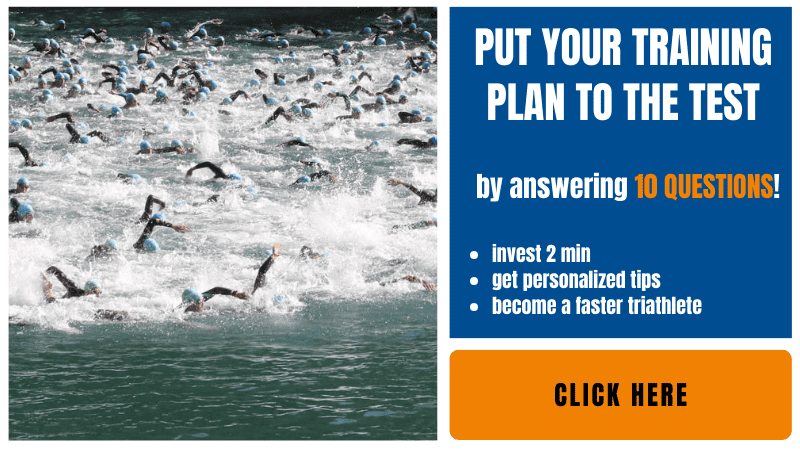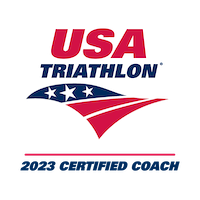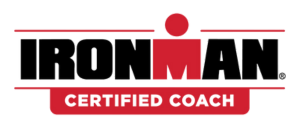As I have been moving towards longer distance triathlons, I was curious about the time triathletes need to complete an Ironman. I know I should be proud of “just” finishing an Ironman, but as I am really competitive, I can’t help myself but compare the time with other triathletes.
The average Ironman time is 12h49 min. The women are covering the distance in 13h35 min and the men in 12h38 min. The swim portion lasts 10% of this time (or 1h19 min), the bike 50% (or 6h19), the run 38% (or 4h54 min), and finally, the transitions 2% (17min).
I found out that those times depend greatly on the Age Group and the specific course conditions. So let’s check that in more detail.
METHODOLOGY
- I checked all Ironman races from 2019, and I excluded the ones which were shortened. The final database consists of 55,123 times from age-groupers.
A special thanks to Coach Cox, who is gathering results of all Ironman (as well as Ironman 70.3) events. He made my life easier!
- For each race, I have checked the course profile on the Ironman website.
- I excluded the Ironman World Championship (a.k.a. Kona) as it would obviously skew the results. Instead, I made an entire section about this particular race at the end of this article.
AVERAGE IRONMAN TIME PER AGE GROUP
As you can see in the graph below, the men complete the Ironman distance only 50 min to 1h faster than the women across all age groups.
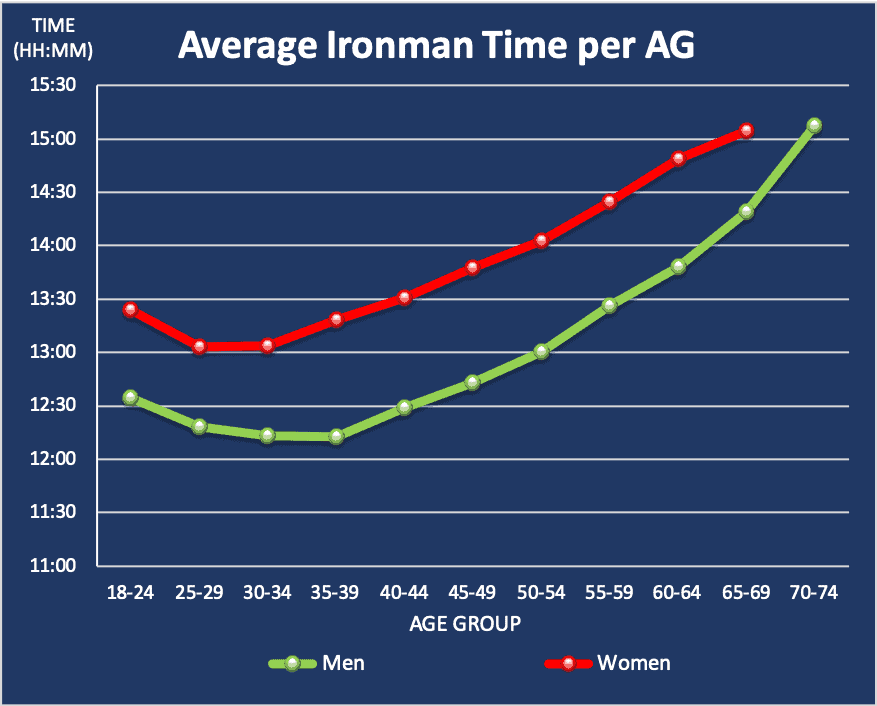
The average Ironman time for women is 13h35 min. They spend 1h23 min on the swim, 6h45 min on the bike, 5h10 min on the run, and 17 min in transitions.
The average Ironman time for men is 12h38 min. They spend 1h18 min on the swim, 6h13 min on the bike, 4h50 min on the run, and 17 min in transitions.
If you want to learn more about the records on this distance, check my article: Ironman Records (Overall Time And Per Discipline)
INFLUENCE OF THE SWIM, BIKE, AND RUN COURSE
Knowing that a triathlete will spend 50% of their time on the bike and 38% on the run course, it is not surprising that the race’s elevation profile greatly influences the total time.
On the graph below, you can see that a hilly Ironman bike course will make you spend 53 min more on the bike compared to a flat course and 35 min more compared to a rolling bike course.
A rolling course will make you run 22 min more compared to a flat course on average.
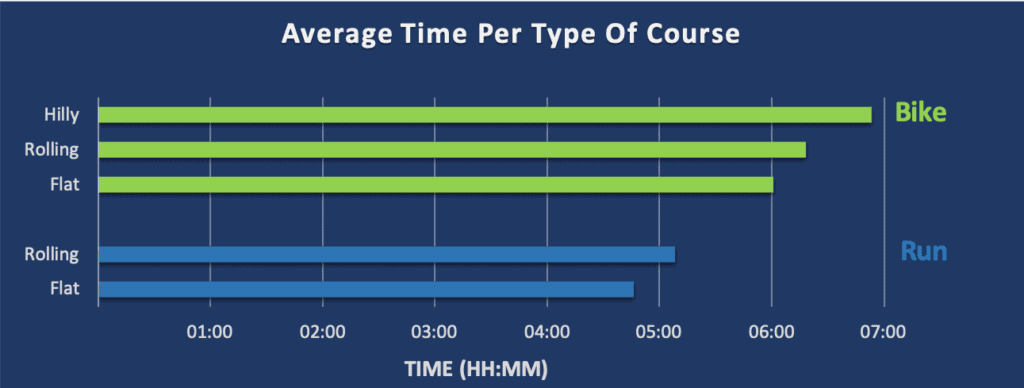
Even though the swim is only 10% of the duration of an Ironman, a lot of triathletes are concerned about it (myself included!). However, if you look at the average swim times or even at the swim cut-off pace you would need, those are not so scary. Check out this article: Average Swim Times For An Ironman
AVERAGE IRONMAN TIME PER RACE
You can find below the average time of all races. It can be useful to compare your time from one Ironman to another. For example, if you see that the average time in IM Austria is 30 min faster than in IM Vichy and your time was also 30 min faster, the chances are pretty high that the course was a faster one, not you. I’m sorry to disappoint you 😀
Please note that a more competitive field from one race to another will also affect the average time.
In 2019, the triathletes needed on average 12h45 min to complete the Ironman distance (incl. the World Championship). As you can see below, Kona was the fastest course with an average of 11h31 min, and Chattanooga the slowest with an average time of 14h06 min.
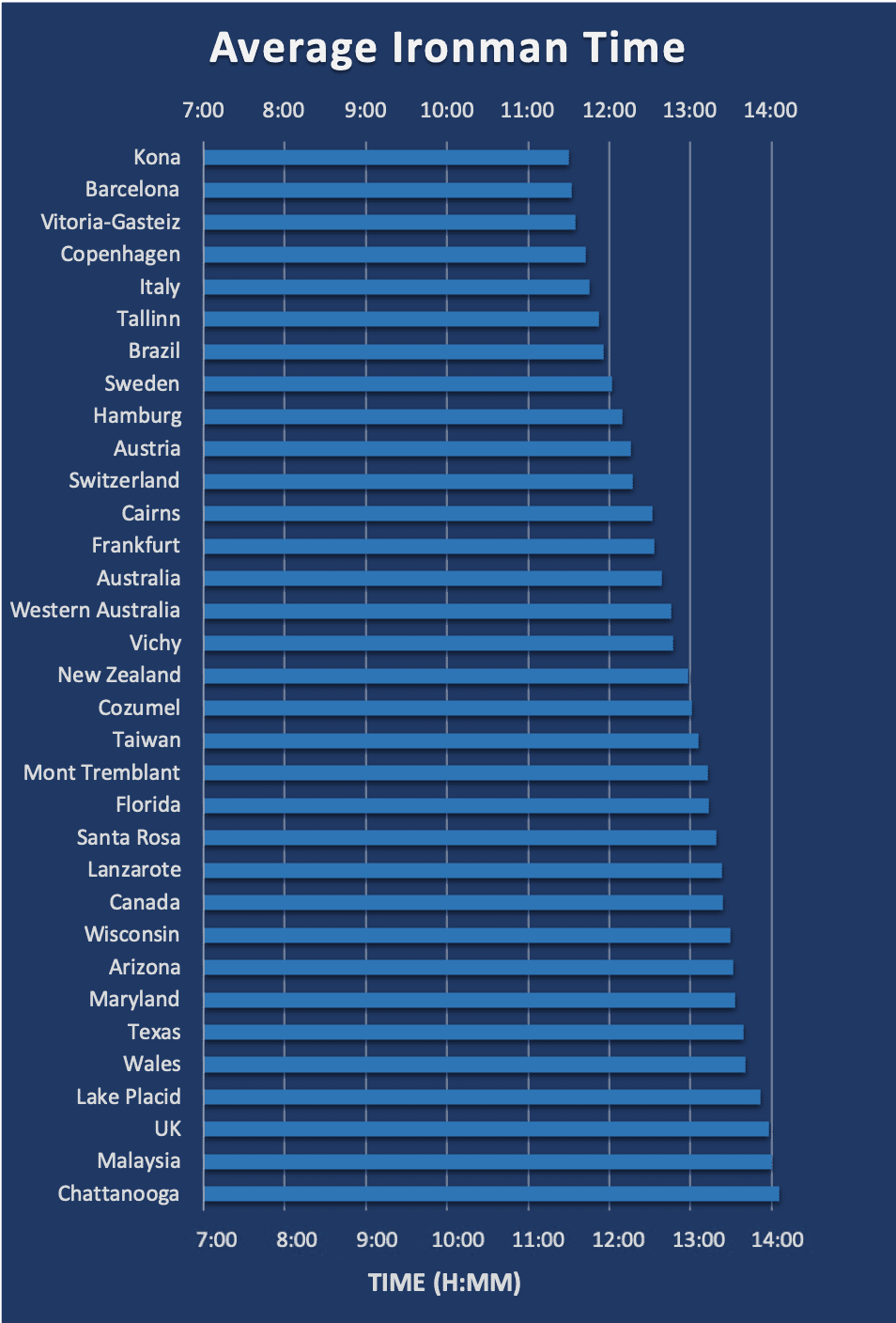
If you want to see more details, I wrote in-depth articles about each sport. Have a look here:
AVERAGE IRONMAN TIME IN KONA
Kona is definitely a particular race. The vast majority of triathletes got a slot by finishing at the top places of their age group in another Ironman race. Hence, it is not surprising to see extremely fast times in this race.
For learning more about the other ways you can get a Kona slot, check this article: 11 Ways To Qualify For Ironman Kona, Hawaii.
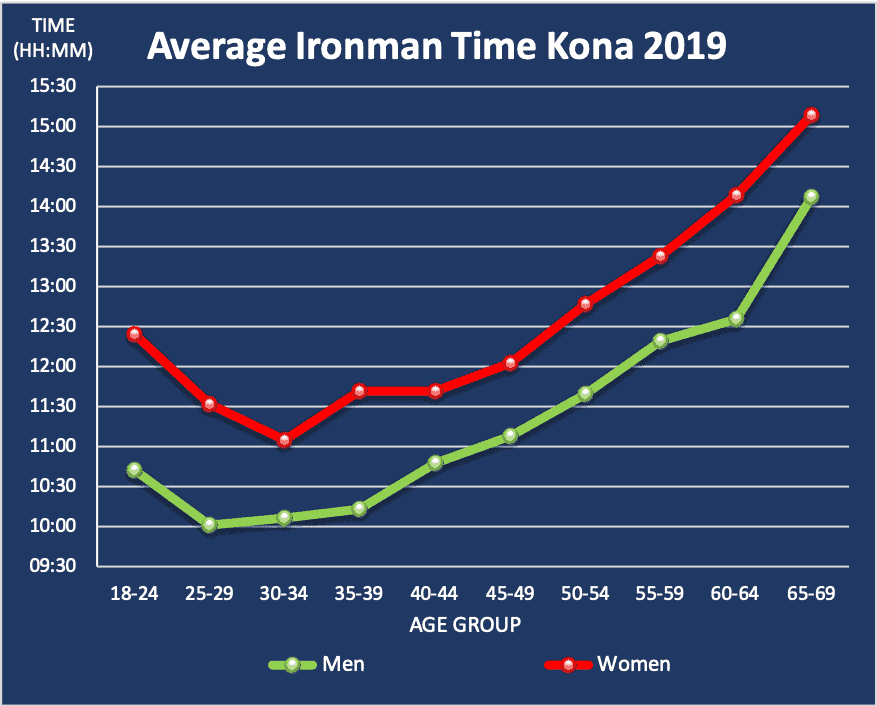
In Kona, the women needed 12h21 min and the men 11h13 min. Compared to other Ironman races, that is roughly 1h 20 min faster! The gap is over 2 hours for the competitive men 25-29 and 30-34 age group. That’s great; the latest one is actually my own age group… 😀
If you want to check the records from the pros at Kona, check this article: Kona Records: Overall Time, Per Discipline, And Over The Years
Concluding I can say that any triathlete who completes an Ironman is already a hero. If you are competitive, I hope this article helped you to put those Ironman times into perspective. Now, let’s get back to training.
If you are interested in learning more about the average times of other triathlon distances, have a look at this article: Triathlon Times Across Age Groups And Distances

